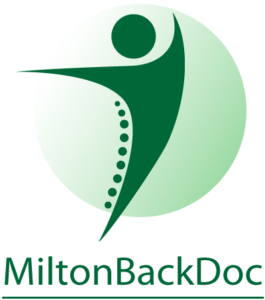What is a muscle cramp?
A muscle cramp is a strong, painful contraction or tightening of a muscle that comes on suddenly and lasts anywhere from a few seconds up to several minutes. It often occurs in the legs. A muscle cramp may more commonly be referred to as a “charley horse”.
Here are some key points about leg cramps.
- Leg cramps most commonly affect the calf muscle.
- Leg cramps typically only last a few minutes, but the pain can last for 24 hours.
- Older people and pregnant women are more prone to leg cramps than others.
- Most often, leg cramps are no cause for concern and have no medical significance.
- Dehydration, flat feet and alcoholism are potential factors involved in leg cramps.
- Some medications can increase the likelihood of cramps, including diuretics (water pills), salbutamol (medications for bronchospasm) and statins (cholesterol medications).
Symptoms
Most muscle cramps develop in the leg muscles, particularly in the calf. Besides the sudden, sharp pain, you might also feel or see a hard lump of muscle tissue beneath your skin.
When to see a doctor
Muscle cramps usually disappear on their own and are rarely serious enough to require medical care. However, see your doctor if your cramps:
- Cause severe discomfort
- Are associated with leg swelling, redness or skin changes
- Are associated with muscle weakness
- Happen frequently
- Don’t improve with self-care
- Aren’t associated with an obvious cause, such as strenuous exercise
Causes
Although most muscle cramps are harmless, some may be related to an underlying medical condition, such as:
- Inadequate blood supply. Narrowing of the arteries that deliver blood to your legs (arteriosclerosis/hardening of the arteries of the extremities) can produce cramp-like pain in your legs and feet while you’re exercising. These cramps usually go away soon after you stop exercising.
- Nerve compression. Compression of nerves in your spine (lumbar stenosis) also can produce cramp-like pain in your legs. The pain usually worsens the longer you walk. Walking in a slightly flexed position — such as you would use when pushing a shopping cart ahead of you — may improve or delay the onset of your symptoms.
- Mineral depletion. Too little potassium, calcium or magnesium in your diet can contribute to leg cramps. Diuretics — medications often prescribed for high blood pressure — also can deplete these minerals.
Risk factors
- Age – As people age, they lose muscle mass, so the remaining muscle can become overstressed more easily.
- Overexertion – Athletes who become fatigued and dehydrated while participating in warm-weather sports frequently develop muscle cramps.
- Pregnancy – Muscle cramps also are common during pregnancy.
- Other Medical Conditions – You might be at higher risk of muscle cramps if you have diabetes, or nerve, liver or thyroid disorders.
Prevention
For those people who have seen their doctor and have had more serious problems ruled out, leg cramps can still be a great nuisance, and treating them can be a challenge (which in doctor speak means that we can’t always fix the problem). Here are some preventative techniques for leg cramps:
- Avoid dehydration – Drink plenty of liquids every day. The amount depends on what you eat, your sex, your level of activity, the weather, your health, your age and medications you take. Fluids help your muscles contract and relax and keep muscle cells hydrated and less irritable. During activity, replenish fluids at regular intervals, and continue drinking water or other fluids after you’re finished.
- Stretch your muscles – Stretch before and after you use any muscle for an extended period. If you tend to have leg cramps at night, stretch before bedtime. Light exercise, such as riding a stationary bicycle for a few minutes before bedtime, also may help prevent cramps while you’re sleeping.
- Potassium and magnesium – Even if lab tests are negative, sometimes taking potassium and magnesium can improve the symptoms. Magnesium supplements are generally safe (although they tend to loosen the bowels), but potassium supplements shouldn’t be taken without doctor supervision. A banana before bedtime is a safer way of increasing your potassium.
- Cut back on alcohol and caffeine – Both of these can cause mild dehydration, which can make muscle cramps more likely.
What Should You Do When You Have a Leg Cramp?
If you have a cramp, these actions may provide relief:
- Stretch and Massage – Stretch the cramped muscle and gently rub it to help it relax. For a calf cramp, put your weight on your cramped leg and bend your knee slightly. If you’re unable to stand, sit on the floor or in a chair with your affected leg extended.
- Alternatively – Try pulling the top of your foot on the affected side toward your head while your leg remains in a straightened position. This will also help ease a back thigh (hamstring) cramp. For a front thigh (quadriceps) cramp, use a chair to steady yourself and try pulling your foot on the affected side up toward your buttock.
- Apply Heat or Cold – Use a warm towel or heating pad on tense or tight muscles. Taking a warm bath or directing the stream of a hot shower onto the cramped muscle also can help. Alternatively, massaging the cramped muscle with ice may relieve pain.
References
http://www.medicalnewstoday.com/articles/180160.php
http://www.mayoclinic.org/diseases-conditions/muscle-cramp/symptoms-causes/dxc-20186052
http://www.quickanddirtytips.com/health-fitness/medical-conditions/when-should-you-worry-about-leg-cramps


